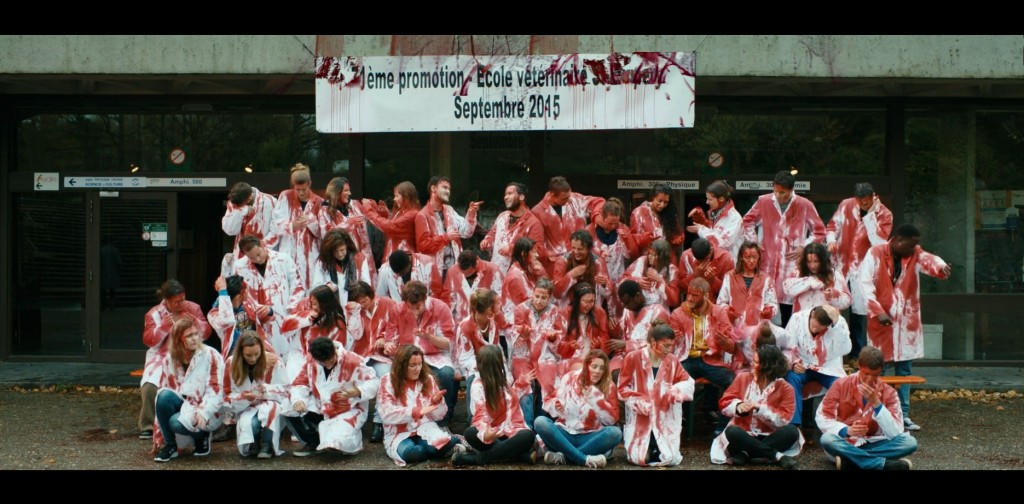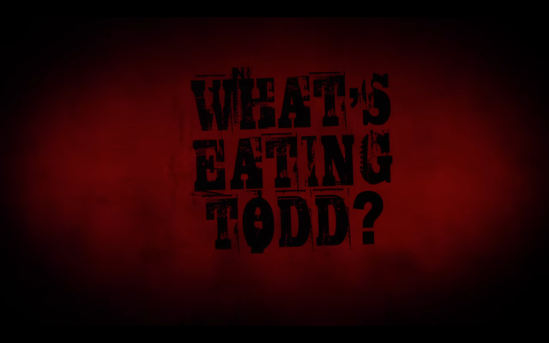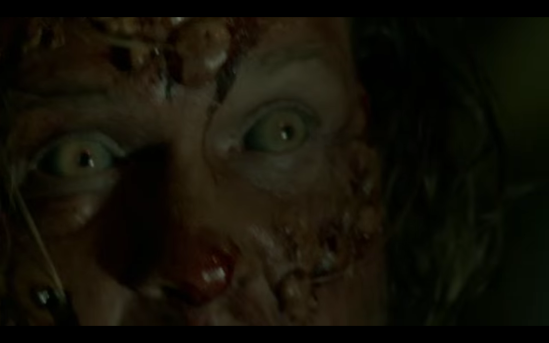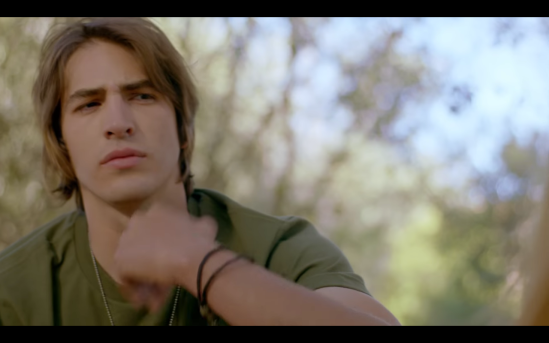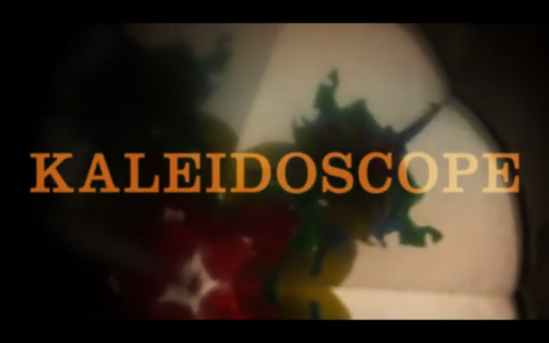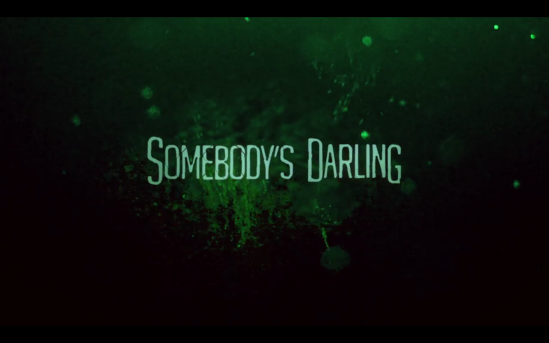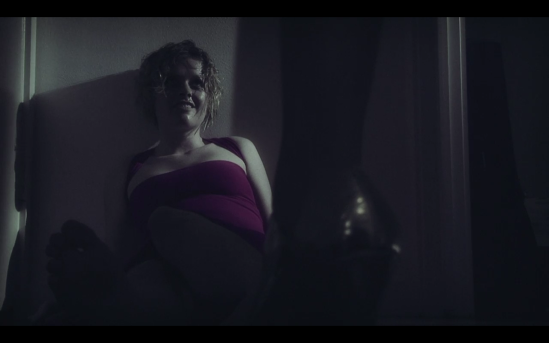
“Tonight She Comes” is Now Available on DVD! Purchase Here!
Two women looking to spend quality debauchery time with their friend at her family’s rural cabin arrive find their friend is nowhere to be seen or heard from but they do discover a lost mailman asleep on the cabin porch on his first day. As the trio yuck it up with plenty of booze and flirtation around the campfire, locked out of the cabin with still no sign of their girlfriend, the day turns to night and they’re eager to get into each other’s pants for an alcohol fueled fling. Unfortunately for them, their lost friend just showed up naked out from the adjacent lake. What usually would be an invitation for an extended good time, the naked friend is stained head to toe in blood and determined to kill anyone in her path. In their escape, they run into a backwoods family of black magic occultists trying to fix their titanic satanic mistake before everyone dies.

If a campy, gory, backwaters horror engulfed in occult get your filmic scary movie juices flowing, then “Tonight She Comes” should be at the top of your must-watch list. The 2016, American-made feature from writer-director Matt Stuertz takes the cabin-in-the-woods trope to the extreme to the likes of a farcical feat many have tried but only a few achieve. “Tonight She Comes” is Stuertz’s sophomore picture behind the cleverly titled found footage horror “RWD,” or “<<RWD,” as in the rewind symbol you’d typically see on VHS players, and has since his bloodthirst for horror with the practical effects-driven and supernatural terrorizing of a young woman in this year’s “Human” and is currently in production with a gory vampire flick, “Wake Not the Dead.” Gory is Stuertz niche tinged with a repulsive tone that’s not just splatter nor intestinal evisceration. Cinematographer Chris Benson and sound designer Jamison Sweet, of the St. Louis-based production company Lamplight Films, and Twenty Eighteen Seventy-Six’s Stuertz produce the film.

What’s neat about the progressing script, acutely angling 90 degrees to keep the story fresh and unsuspecting, is the principal leads constantly change hands. By conventional standards, the young, good looking, white male mail with a pleasant disposition in James (Nathan Eswine) places audiences on that path with a post title opening of the inexperienced, first-day-on-the-job James doing his route diligently despite difficulties locating an address. Also, in comparison to his dimwitted and degenerate best friend Pete (Adam Hartley, “The Slender Man”), James is a pedestalled prince. As the day turns to night, James begins to show cracks in his gallantry and the baton is roughly passed to the rough around the edges but tough as they come Ashley (Larissa White, “Charlatan”). In another dynamic duo curiosity, her best friend in Lyndsey (Cameisha Cotton) drunkenly sluts her way to the end of the whiskey bottle and toward the inside of James’ pants, demarcating the horror tropes between the two pairings by sticking up and out the perverted goofball and the alcoholic promiscuous while keeping in protagonist good graces and staid James and Ashely up until the baton is passed along again inside the trio of an occult practicing backwoods family who messed up a reincarnation spell and inadvertently resurrected a powerful, murderous demon. Between the family-first Pa, Frances (Frankie Ray, “Bad Haircut”), the near silent big brother, Philip (Brock Russell) and the rational sister, Felicity (Jenna McDonald), the protagonist shift lands in the lap of the younger sister who takes charge in a show of no nonsense command and force that deserves respect for a role that’s usually diluted or wasted in isolated cabin horror. Each actor performs exactly on Stuertz given script with the cast rounding out with former model Dal Nicole in her full birthday suit for most of her screentime as the Kristy inhabited demon plodding to kill in a nonstop wrath.

Most audiences and critics will pan “Tonight She Comes” as nonsensical drivel touting a gauntlet of gore and a fixed nudity to carry it into a favorable edge with fans. All I have to say about Matt Stuertz script and vision is it breaks the conventional stereotypes into shattered shards and uses those shards as gouging, bloodletting weapons. On it’s face, “Tonight She Comes” appears to be another run-of-the-mill cabin-in-the-woods horror with throwaway characters and many vague plot points that don’t have an encircling reference. Stuertz purposefully throws cation to the wind and makes the movie he wants to see, a no-holds barred blood fest geared to obliterate the tropes and only provide slivers of important information, just enough to pass the bar to the next round of ironfisted thrashings. The story never allows the sediment to settle between the character action and dialogue debauchery, the eclectic and interesting POV shots, the diabolical practical effects, the sparingly used but effective visual effects, the continuously guess where this story is heading and, of course, the unabashed eye candy that is Dal Nicole fully nude in full time. The other thing that can bog down viewers, and rightfully so, is the time check title cards that are supposed to tick down to the moment the demon emerges into the fold, turning the events of youth fun into a grind of survival. Randomized and spelled out, literally, the interjected times don’t seemingly match the span of time passed on screen. What should take a few minutes between scenes, the title card states hours had passed; I’m not positive if this is part of Stuertz’s trope lampooning or not but this portion excels as more distracting from its theme-bombing track.

Another great and gory to the extreme release from the collaborating collective of Danse Macabre, Jinga Films, and MVDVisual. “Tonight She Comes” comes to a new DVD release that’s MPEG2 encoded, 720p standard resolution, on a DVD5 and presented in a widescreen 1.78:1 aspect ratio. Not peak image quality by any means of available formats out today, solidifying this DVD release a roll back to a lesser picture quality, but digital capturing goes without saying that DVD can still be a formidable format in regard to picture quality. Likely, you will not see too much different between standard and high-definition but there are subtle areas of contrast, such as the black areas does contain faint banding and the details don’t inlay a zing of crispness like they should. A film that starts off with a title card reading, THIS FILM SHOULD BE PLAYED LOUD… AS HELL, the DVD does the statement and Stuertz’s film justice with an uncompressed English 5.1 surround sound mix that highlights on and hits upon the important sound effects, screams, and building discordance, tumbling minor tone, and spiny synth-rock and 80’s horror-inspired score of Wojciech Golczewski (“We Are Still Here”). Dialogue lands with prominence amongst the clatter and chaos layers that gives a real sense and elevation to the dialect of Jenna MacDonald’s tough backwoods occultist. Not much in the way of depth as mostly everything is taken to the extreme volume, actions far and near, but range is aplenty by spanning the innocent swashing of alcohol in a bottle to the splatter of brains on the wall, from the crackling of fire to the gnarly rip of flesh being torn apart, and the robust force of bullets being fired to the deluge of menstrual blood filling a cup. Yes, it’s one of those movies! English subtitles are available for selection. Special features include a Matt Stuertz commentary track, deleted scenes, a behind-the-scenes and raw footage look with cast and crew interviews with some still in character wardrobe, the Stuertz’s short film “Slashers,” and the teaser and theatrical trailer. The DVD packing is about as generic as they come with the naked silhouette of the titular villainess standing in front of not the cabin the film in not the forest this movie takes place. The arrangement is reminiscent of an “Evil Dead” knockoff. The tall DVD Amaray case has nothing more to note in terms of physical prowess. Aforementioned, this DVD is a rollback release in a few ways, and one is, unfortunately, the rating with a Rated R cut with a runtime of 84 minutes whereas previous releases were not rated clocking in at 90 minutes. However, as far as I can tell, the Jinga Films, Danse Macabre, and MVDVisual does offer region free playback unlike early editions locked in at region 1.
Last Rites: If looking for something not too serious, checks all the gory and gross boxes, has decent practical and visual effects, and bares skin, “Tonight She Comes” is a fierce, ferocious, and fight-to-the-death option worth the viewing calories!


